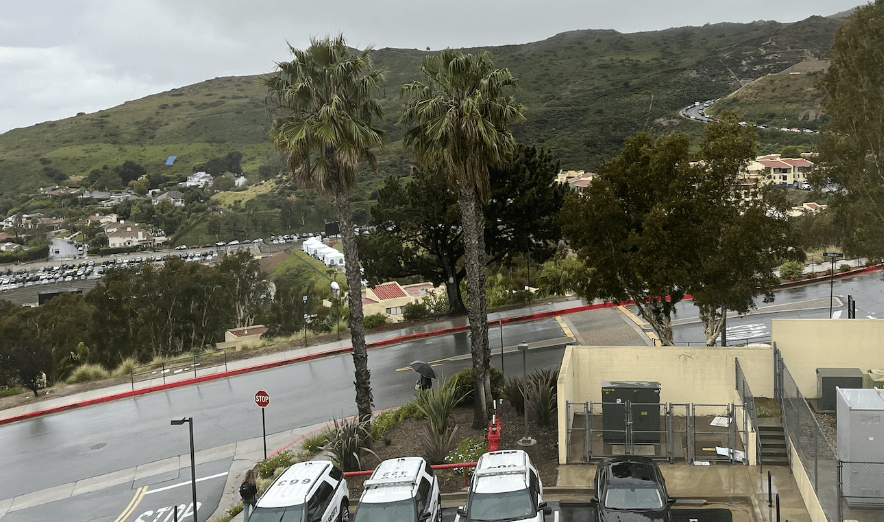
Seasonal affective disorder, or seasonal depression, is a disorder the sunny California stereotype often masks. However, it still affects many California residents.
California received more than 33 inches of rain last year, which is 128% of the average, making it one of the wettest years in the state’s recorded history, according to ABC7 News. Not only does rain bring mudslides, but it also contributes to an overall gloomier and darker atmosphere.
Professor of Psychology Steven Rouse understands firsthand the effects of seasonal depression after attending the University of Minnesota. In regions like Minnesota, college students have been affected by the lack of sunlight consistently every fall and winter, Rouse said.
Due to the obvious winter darkness in the north, seasonal depression in California can be overlooked, according to ABC7 News.
“Seasonal affective disorder specifically is a psychiatric condition where a person has a depressive episode, but it is specifically due to changes in the amount of light a person is exposed to and changes in the season itself,” Rouse said. “It’s a form of depression that has a seasonal pattern that becomes more prevalent in the seasons of the year where there is less light.”
In California, a lack of sunlight in the winter and spring seasons has become more prevalent because of the increase in rainy weather, according to ABC7 News.
“Up there [Minnesota], there were often days where the sun wouldn’t have risen by eight in the morning and would set by five in the afternoon,” Rouse said. “So, people would have the entire day where they wouldn’t see sunlight at all.”
Signs of Depression
The symptoms of seasonal affective disorder do not differ much from other forms of depression, Rouse said. Common symptoms include a lack of joy in things that had given someone joy before, a decrease or increase in energy and sleep levels and a change in appetite.
Junior California native Hannah Schendel said she has been experiencing more feelings of seasonal depression in the past few years than ever before, primarily due to the increase in rainy weather.
“I think growing up in a sunny area where I am constantly surrounded by light has definitely made my body crave more sun than others across the country,” Schendel said. “I think that since I am so used to the sun, my body is thrown off when it rains for days or weeks.”
While it is more common for seasonal affective disorder to affect people in the northern regions, changes like constant rain in California can also affect people’s biochemistry, Rouse said.
“If a person can’t get outside and can’t exercise, that can change their biochemistry,” Rouse said. “If a person can’t get outside and can’t see their friends, that too can change their biochemistry. It is in part due to light, but it can also be due to changes in activities a person does.”
A sedentary life is more likely to lead to depression. If a person is in a region of the country that does not allow them to be active, that can contribute to the disorder, Rouse said.
Junior Washington native Katherine Bush said the constant California sun has greatly increased her mood.
“Coming from Seattle, I am used to rain and darkness all the time,” Bush said. “It is truly draining, and the sunlight in California was a large reason why I chose Pepperdine in the first place.”
Without elements like rain and snow, Bush said her productivity rises. She can get more done without worrying about the negative impact of the weather, and she feels much more motivated to do her schoolwork and other responsibilities.
“Sometimes, the rain reminds me of home, and it feels comfortable,” Bush said. “But, once it starts raining for days on end, it starts to make me feel sad again. I honestly just want to stay home in my bed and sleep all day.”
Interactive by Kylie Kowalski
The Student Counseling Center is an important tool for students who might be experiencing symptoms of seasonal depression, Rouse said.
Beyond the counseling center, there are artificial light tools people can buy that produce the same wavelengths of light as natural sunlight, Rouse said. Some studies show empirical evidence that these lightbulbs are effective if they produce the same wavelength as natural light.
Rouse said he advises students who feel symptoms of seasonal depression to make an extra effort to find some form of direct sunlight as a way to combat these feelings.
“I think depression as a whole needs to be taken seriously for all college students,” Rouse said. “Depression is not uncommon among college students. I think it is always important for students to be aware of themselves and their friends.”
___________________
Follow the Graphic on X: @PeppGraphic
Contact Kylie Kowalski via email: kylie.kowalski@pepperdine.edu

